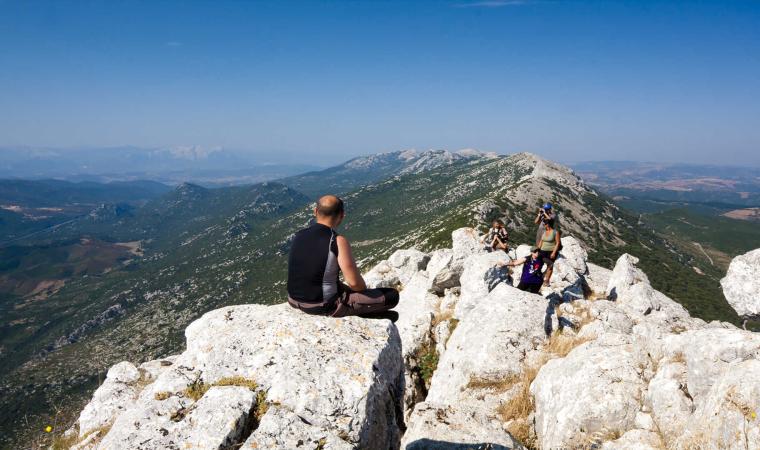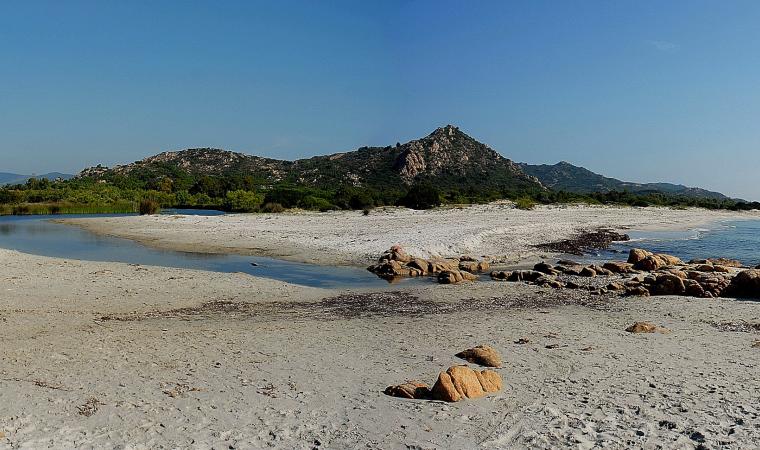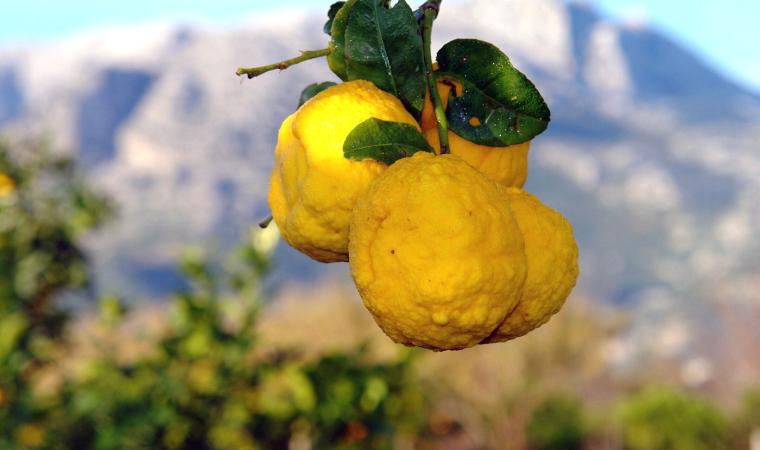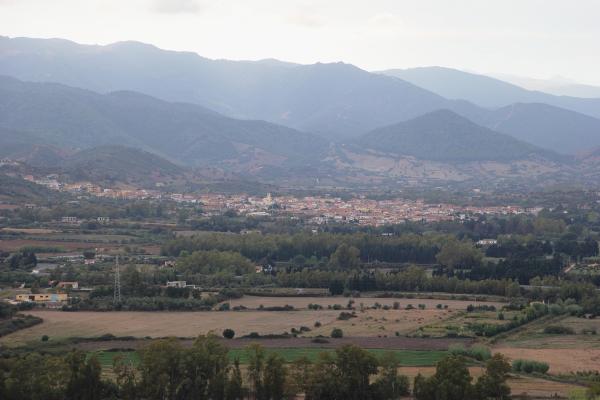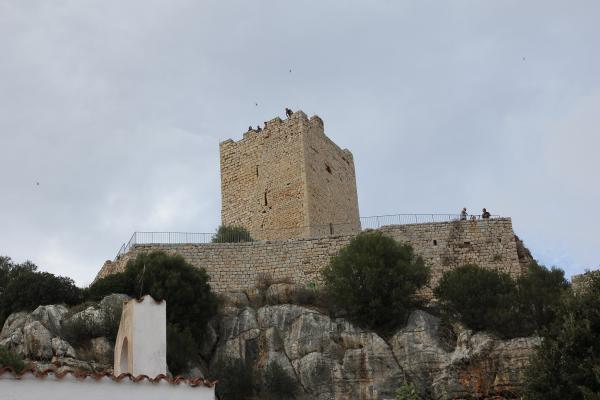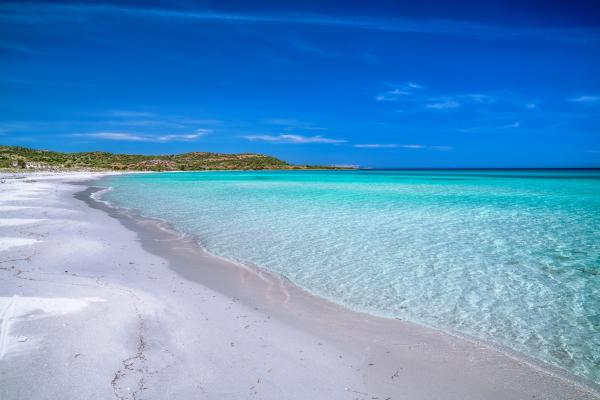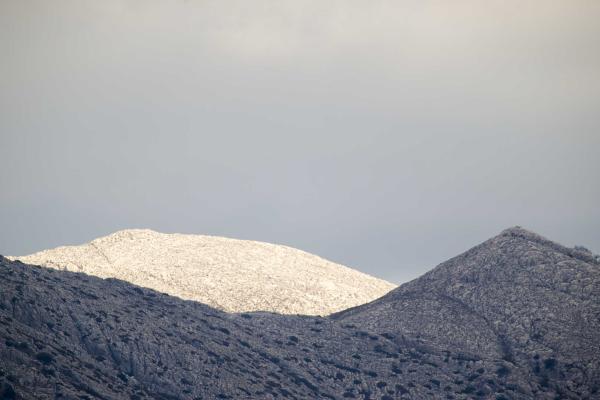The impressive Montalbo dominates the landscape: this 'Sardinian dolomite', with its white rocks, looks out onto 25 kilometres of coastline, half of which are of fine, light sand. Siniscola is a small town with twelve thousand inhabitants, the most highly-populated in the Baronie area, second in the province of Nuoro and 50 kilometres from Olbia. In the Roman period it was Portus Lugudonis, a station along the coast leading to Karalis. Around it, the scenery is varied: limestone elevations, gorges and cliffs, hills and plains, pastures and vineyards, lagoons and beaches, perfect places for trekking, horse-riding, speleology, free climbing and surfing. Along the silver ridge of Mount Albo, you can enjoy evocative itineraries, once trails for coal merchants and shepherds, with archaeological sites and pinnettos, holm oak forests and Mediterranean scrub, populated by the mouflon, the golden eagle and the red-billed chough.
The peak is 'lunar', with doline valleys, chasms, underground rivers and caves, which were inhabited in prehistoric times: Bona Fraule, where iron weapons were found, Gane 'e Gortoe, rich in limestone concretions, Sa Conca 'e Locoli, eroded by the fierceness of the water, and Sa Prejone 'e 'Orcu, a Nuragic cave-sanctuary. In all, there are thirty Nuragic settlements, among which the villages of Luthuthai and Rempellos, the Nuraghe Conca Umosa and the Tombs of Giants Sas Kolovranas, Su Itichinzu and Su Piccante. The first traces of human presence date back to the 6th millennium BC, in the grotto of Elène Portiche and, from a later period, there is Cuccuru 'e Janas, 'hill of the fairies', a grotto with radially-positioned burial chambers.
From the mountain, the trails lead all the way down to the beaches, interrupted by low cliffs and framed by transparent, turquoise waters. The first stop is La Caletta, a seaside district and tourist port with five kilometres of golden beach, delimited by the pond of Su Graneri and a pine forest. Moving south, you will find Santa Lucia, a fishing village, where Sapori di Mare (Flavours of the Sea) takes place in June, with tastings of seafood, and in September you can enjoy the shows taking place during the Festival Internazionale (International Festival). Next is the enchanting S'Ena e Sa Chitta, the 'beach of sugared almonds': white sand and smooth rocks. A little further south, there are the huge dunes and centuries-old junipers of Capo Comino, which looks like a film setting. Behind it, there are the ponds of Salina Manna and Salinedda. Moving further south, you will reach Bèrchida, a gem along the eastern coast, with its dazzling splendour that comes from the white sand, emerald green waters and golden sand dunes.
During the Spanish period, the coastline was protected by watchtowers, reminding us of Saracen incursions. One of these still exists in Santa Lucia and there is another, dated 1608, which dominates the medieval town centre, along with the eighteenth-century parish church of San Giovanni Battista. Nostra Signora della Salute is worth visiting and was built near the spring of Luittu, with its 'healing' waters, one of the many springs dotted around the territory. The events taking place are endless: Fires of Sant'Antonio Abate, Carnival, Holy Week, a stage of Spring in Baronia. In mid-October, the most heartfelt (and centuries-old) celebration takes place in honour of Nostra Signora delle Grazie (Our Lady of Graces). The religiousness can also be seen in the various festivals taking place, during which you can feel the authenticity of the community and taste Cannonau wine and pecorino cheese, menus based on suppa thiniscolesa and roasted meats. The symbol of Siniscola is Sa Pompia, a large citrus fruit that is a cross between a citron and a lemon. It is used in the laborious preparation of exquisite pastries: pompìa intrea and s'aranzata. This fruit is also used in cosmetics and herbal preparations.






